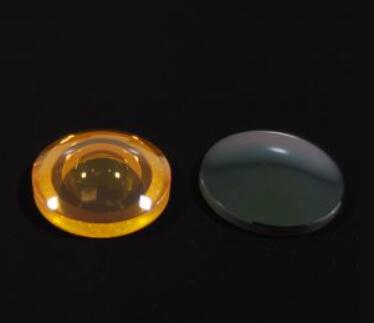Unlocking the Invisible: Exploring the World of IR Lenses
Introduction: IR lenses, short for infrared lenses, are remarkable optical tools that extend our vision beyond the visible spectrum. Designed to capture and focus infrared light, these lenses find applications in diverse fields, from surveillance and scientific research to industrial and thermal imaging. Let's delve deeper into the fascinating realm of IR lenses.
Exploring the Basics of IR Lenses: IR lenses are specialized optical components engineered to transmit and focus infrared light, which lies beyond the red end of the visible spectrum. Composed of materials like germanium, silicon, or chalcogenide glasses, these lenses possess the necessary optical properties to effectively capture infrared wavelengths. They come in various designs, tailored for specific applications. Some are optimized for imaging, enabling the capture of detailed infrared images, while others excel in thermal imaging, converting infrared radiation into thermal images for applications like building inspections and search operations.

Enhancing Performance with Filters: To optimize their performance, IR lenses are often paired with infrared filters. These filters selectively block unwanted visible light while allowing infrared light to pass through. By doing so, they improve the clarity and accuracy of the resulting infrared images. Filters play a crucial role in enhancing the overall performance of IR lenses, particularly in applications that require precise detection and analysis of infrared radiation.
Applications in Various Fields: The versatility of IR lenses makes them invaluable in numerous industries. In the automotive sector, IR lenses are employed in night vision systems, enhancing visibility and improving driver safety. In aerospace, these lenses are utilized in remote sensing and surveillance systems, enabling the detection and tracking of heat signatures. In scientific research, IR lenses aid in studying the thermal behavior of materials and biological samples. Furthermore, IR lenses find application in security and surveillance, enabling the monitoring of restricted areas or identifying potential threats.
Recommended article:Revolutionizing Navigation: The Laser Gyroscope Unveiled
Quartz Flexible Accelerometer in Drilling: Enhancing Efficiency and Safety
What Are The Features And Specifications of The Multihead Weigher?
Three Phase Power Analyzer: Accurate Measurements for Electrical Systems
Spherical vs. Aspheric Lenses: A Clear Perspective
What is the difference between chromatic and achromatic lens?
How does a MEMS IMU work?
Factors Influencing Performance: Several factors impact the performance of IR lenses. Focal length determines the field of view and magnification, while the aperture controls the amount of light entering the lens. Optical quality affects image sharpness, contrast, and distortion. Careful consideration of these factors ensures that the chosen IR lens aligns with the specific requirements of the intended application.
Conclusion: IR lenses unlock a hidden world by capturing and focusing infrared light. From imaging and thermal analysis to security and scientific research, these lenses find applications in various fields. The precise design and construction, coupled with the use of infrared filters, optimize their performance. As technology continues to advance, IR lenses will undoubtedly play an increasingly vital role in revealing the invisible and expanding our understanding of the infrared spectrum.
Oplens is one of leading optical elements and spherical lens manufacturer. We insist on supply high precision optical products with consistent quality and professional serve.
Applications of Custom Optical Windows
Enhance Your Seismic Monitoring with Smart Sensor 1c External Connection
What is a seismic vibration?
What is the best definition of a seismograph?
Revolutionizing earthquake detection with geophones sensors?
Exploring Geophone Technology in Vertical Land Analysis
Uncovering the Purpose of a Geophone: Explained
Related Articles








Comments
0